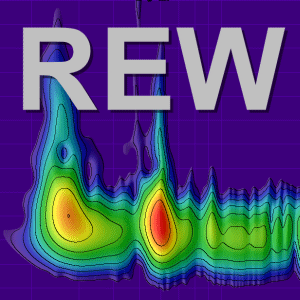-
AUDIO VIDEO PROCESSING, SETUP & ENVIRONMENTOfficial REW (Room EQ Wizard) Support Forum Audiolense User Forum Calibration Equipment Auto-EQ Platforms / Immersive Audio Codecs Video Display Technologies / Calibration AV System Setup and Support Listening Room / Home Theater Build Projects Room Acoustics and Treatments AV Showcase Movies / Music / TV / Streaming
-
AUDIO VIDEO DISCUSSION / EQUIPMENTHome Theater / Audio and Video - Misc Topics Essence For Hi Res Audio AV Equipment Advice and Pricing Awesome Deals and Budget AV Equipment AV Receivers / Processors / Amps UHD / Blu-ray / CD Players / Streaming Devices Two Channel Hi-Fi Equipment DIY Audio Projects Computer Systems - HTPC / Gaming HD and UHD Flat Screen Displays Projectors and Projection Screens AV Accessories Buy - Sell - Trade
Navigation
Install the app
How to install the app on iOS
Follow along with the video below to see how to install our site as a web app on your home screen.
Note: This feature may not be available in some browsers.
More options
You are using an out of date browser. It may not display this or other websites correctly.
You should upgrade or use an alternative browser.
You should upgrade or use an alternative browser.
Dithering effect on sine wave
- Thread starter onlyoneme
- Start date
John Mulcahy
REW Author
- Joined
- Apr 3, 2017
- Posts
- 9,070
Yes. REW generates signals using 32-bit floats. Their integer-equivalent precision is 25 bits but lower level dither could have an effect on small amplitude values. The dither selection needs to correspond to the sample width to have the desired effect of linearising the effects of quantisation, 24-bit data needs 24-bit dither.
onlyoneme
New Member
Thread Starter
- Joined
- Jan 18, 2023
- Posts
- 38
I've always used 24 bit dither for 24 data and I've been surprised today when I've tried to use 32 bit dithering because I've expected measurements equal to non-dithered signal. And I got a result like 24 bit dither but with lowered noise level and slightly better distortion calculations instead.
onlyoneme
New Member
Thread Starter
- Joined
- Jan 18, 2023
- Posts
- 38
I guess I do not understand what "The level at which the dither is added is controlled by the sample width selector to the right of the check box." means exactly considering 32-bit float internal REW precision and 24 bit final file sample rate for example.
John Mulcahy
REW Author
- Joined
- Apr 3, 2017
- Posts
- 9,070
When dither is applied to a 24 or 32-bit output format REW does two kinds of dithering. The main one is TPDF dither at 2 lsb, but because the source data is float some float dither is also applied as otherwise artefacts can remain. Dithering signals below the lsb will have variable results depending on the extent to which the signals self-dither, FFT-locked tones or tone frequencies with non-integer sample sequence periods will be much better than sequences with small sets of sample values. Completely removing dither artefacts for signals with few distinct sample values requires one step higher dither than would otherwise be used.
Popular tags
20th century fox
4k blu-ray
4k uhd
4k ultrahd
action
adventure
animated
animation
bass
blu-ray
calibration
comedy
comics
denon
dirac
dirac live
disney
dolby atmos
drama
fantasy
hdmi 2.1
home theater
horror
kaleidescape
klipsch
lionsgate
marantz
movies
onkyo
paramount
pioneer
rew
romance
sci-fi
scream factory
shout factory
sony
stormaudio
subwoofer
svs
terror
thriller
uhd
ultrahd
ultrahd 4k
universal
value electronics
warner
warner brothers
well go usa














